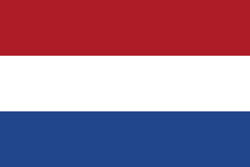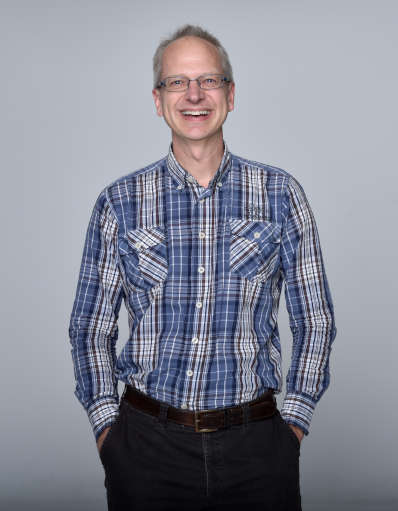IPPOG
IPPOG Forum Members
The Netherlands

Intro
In the Netherlands, (astro)particle physics is coordinated by Nikhef, which is a collaborations between the NWO-I institute for subatomic physics and six universities. Within Nikhef, ~75 technicians and engineers, ~185 physicists and ~25 support staff work together which enables the institute to engage in the design and building of detectors, the analysis of the data from these detectors, and the development of scientific theories. Nikhef has a long history in outreach, with participation in Masterclasses, open days, high school visits, etc. These events are organised by the Nikhef scientists and the communications department. Nikhef was the first organisation signing the IPPOG MoU in 2016.
Details
JOINED: 2016
CURRENT STATUS: MEMBER
Het (astro)deeltjes onderzoek in Nederland wordt gecoördineerd door Nikhef. Nikhef is een samenwerkingsverband tussen het NWO-I instituut voor sub-atomaire fysica en zes universiteiten. Binnen Nikhef werken ~75 technici en ingenieurs, ~185 fysici, en ~25 ondersteunend personeel samen, waardoor het instituut in staat is om detectoren te ontwerpen en bouwen, de data uit deze detectoren te analyseren, en wetenschappelijke theorieën te ontwikkelen. Nikhef heeft een lange geschiedenis in outreach, met deelname aan Masterclasses, open dagen, bezoeken aan middelbare scholen, enz. Deze activiteiten worden door wetenschappers samen met de afdeling communicatie georganiseerd. Nikhef was de eerste organisatie die in 2016 het IPPOG MoU ondertekend heeft.
JOINED: 2016
CURRENT STATUS: MEMBER
Representative

Senior Researcher at Nikhef
Experimental High Energy Physics Huygens building (room: HG02.812) Heyendaalseweg 135 6525 AJ Nijmegen The Netherlands
c.timmermans@science.ru.nl
Charles Timmermans
Charles is a senior researcher at Nikhef, the national institute for subatomic physics in the Netherlands. He received his PhD in physics in 1992 for his work in the L3 experiment at the LEP collider in CERN. Afterwards, he took up a post-doctoral fellowship at the University of Michigan in preparation of the superconducting supercollider. In 1994 Charles started working at the University of Minnesota, measuring the anomalous magnetic moment of the muon at the AGS in Brookhaven. After returning to the Netherlands in 1998, he worked on L3+Cosmics, and briefly on ATLAS. Since 2005 he works in the Pierre Auger Experiment, where he contributed in the development of using radio waves to measure properties of cosmic ray induced air showers. This measurement technique will be used to detect ultra-high-energetic neutrinos by the GRAND experiment, where Charles leads the technical developments.
In 2001, Charles started an outreach project in Nijmegen in which local schools participate in the measurement of cosmic rays. This experiment has evolved in HiSPARC that has received the ALTRAN award for innovation in 2004. Charles received the EPS HEPP outreach prize in 2007 for founding this experiment in which around 100 high schools, some outside the Netherlands, participate. Within the Auger experiment, Charles was one of the coordinators of the outreach task from 2011 until 2021
Charles was nominated as the Netherlands' representative to IPPOG in March 2016.
Charles is als senior onderzoeker verbonden aan Nikhef, het nationaal instituut voor sub-atomaire natuurkunde in Nederland. In 1992 behaalde hij een doctoraat voor zijn werk aan het L3 experiment op CERN. Naderhand kreeg hij een post-doctorale posities aan de universiteit van Michigan ter voorbereiding van de “superconducting supercollider”. In 1994 begon hij aan de Universiteit van Minnesota met het onderzoek aan het anomale magnetisch moment van het muon, gebruik makend van de opstelling aan de AGS versneller in Brookhaven. Na terugkeer in Nederland in 1998 werkte hij aan het L3+Cosmics experiment en kortstondig aan ATLAS. Sinds 2005 doet hij onderzoek bij het Pierre Auger experiment waar hij bijdragen heeft geleverd aan de ontwikkeling van het gebruiken van radio golven om eigenschappen van deeltjeslawines te achterhalen. Deze meet techniek wordt gebruikt in het GRAND experiment, wat als doel heeft ultra hoog energetische neutrinos te detecteren, en waar Charles de technische ontwikkeling leidt.
In 2001 startte Charles een outreach project in Nijmegen met als doel om samen met middelbare scholen kosmische stralen te detecteren. Dit experiment is uitgegroeid tot HiSPARC wat in 2004 de "ALTRAN award for innovation” ontving. Charles ontving in 2007 de EPS-HEPP outreach prize for het ontwikkelen van HiSPARC waaraan ~100 middelbare scholen, sommigen buiten Nederland, deelnemen. Binnen het Auger experiment coördineerde Charles van 2011 tot en met 2021 de outreach activiteiten

